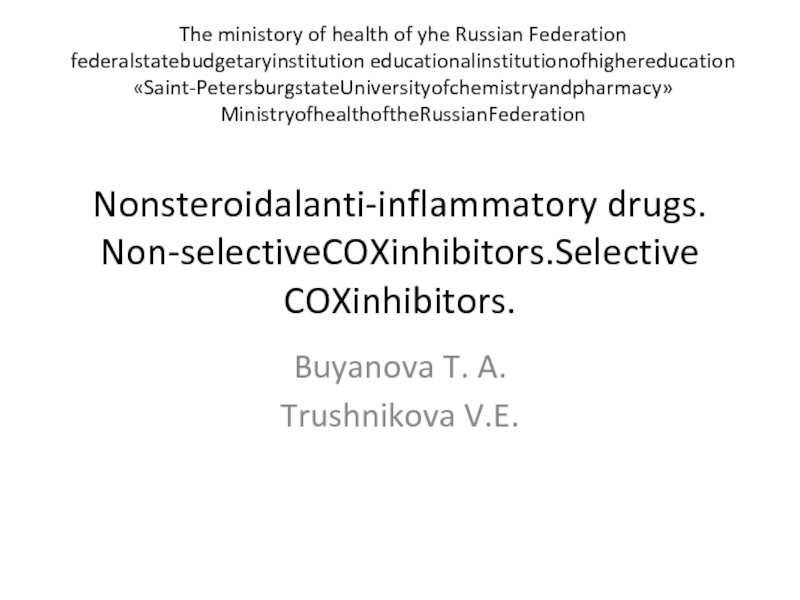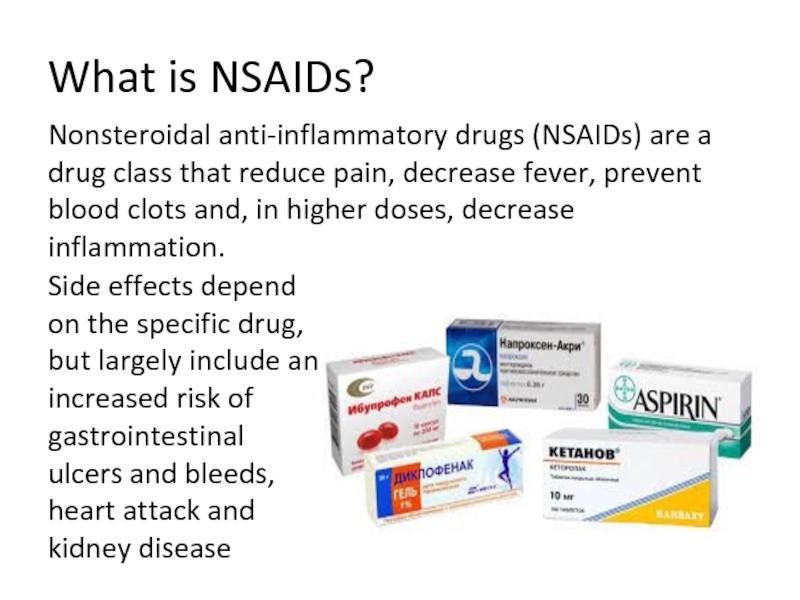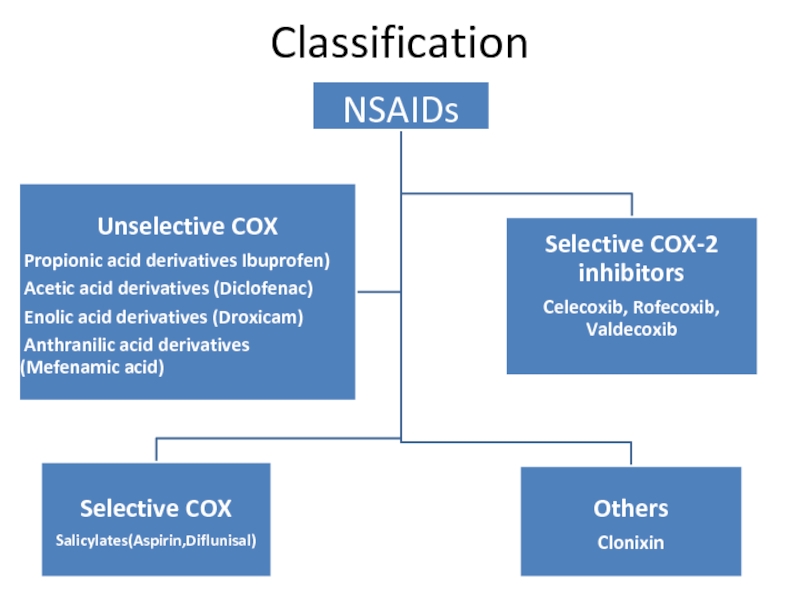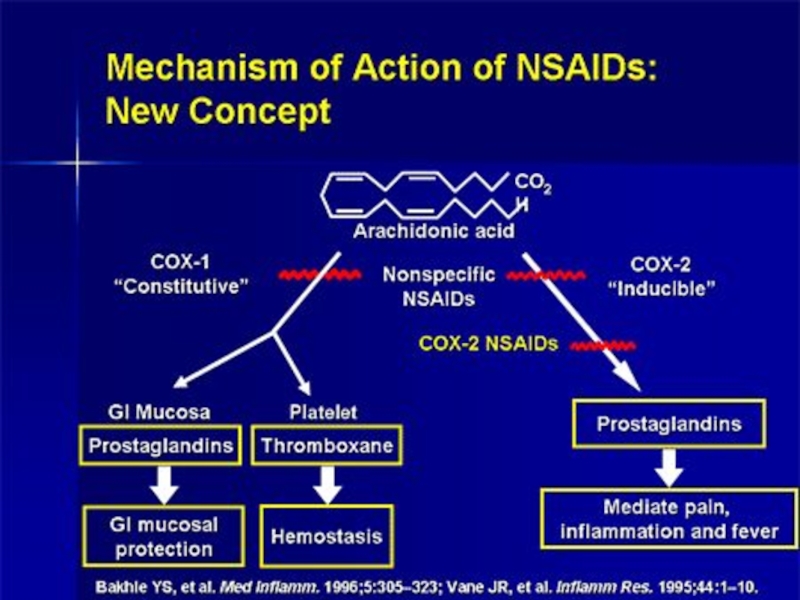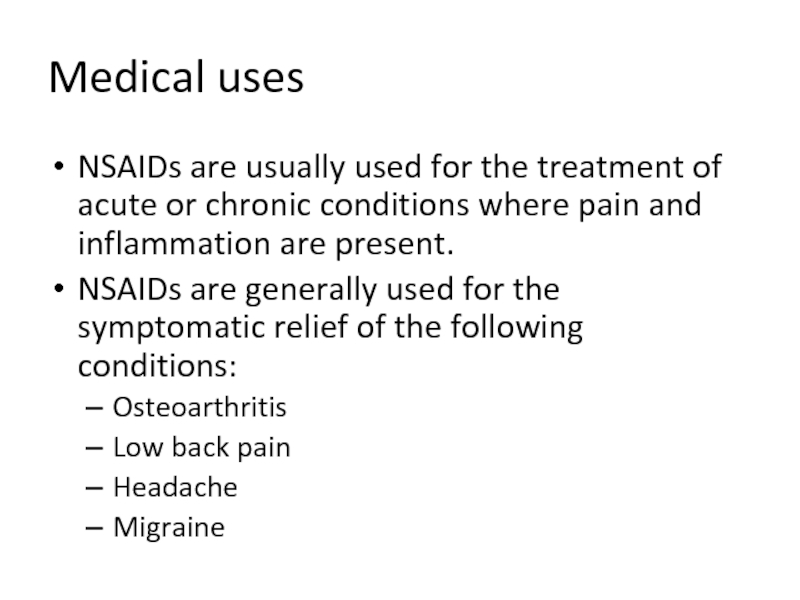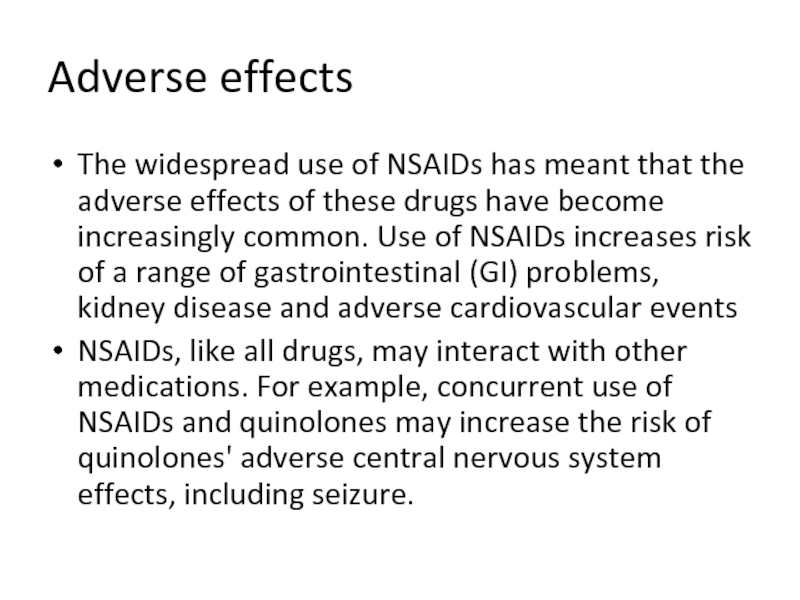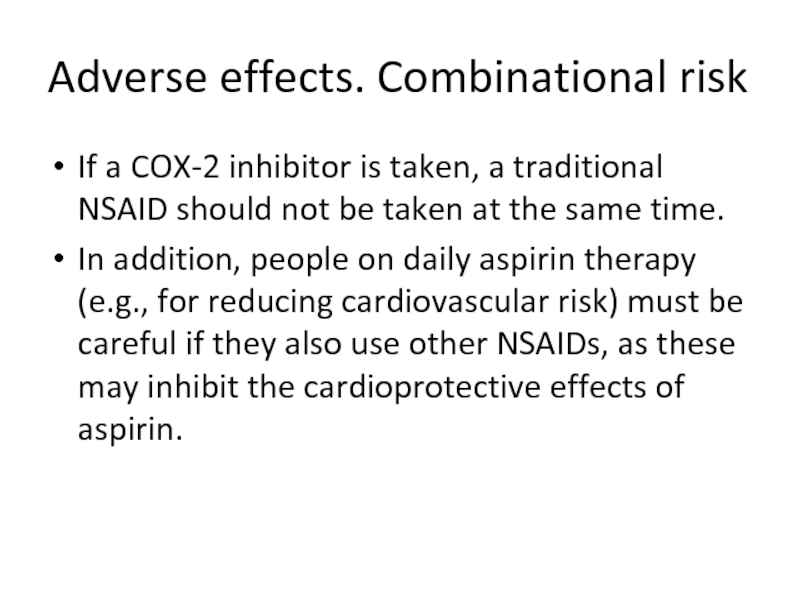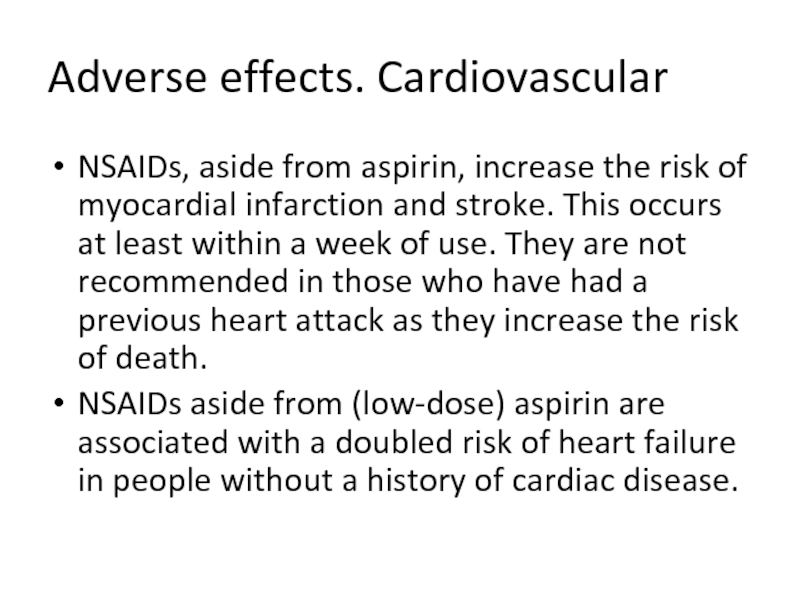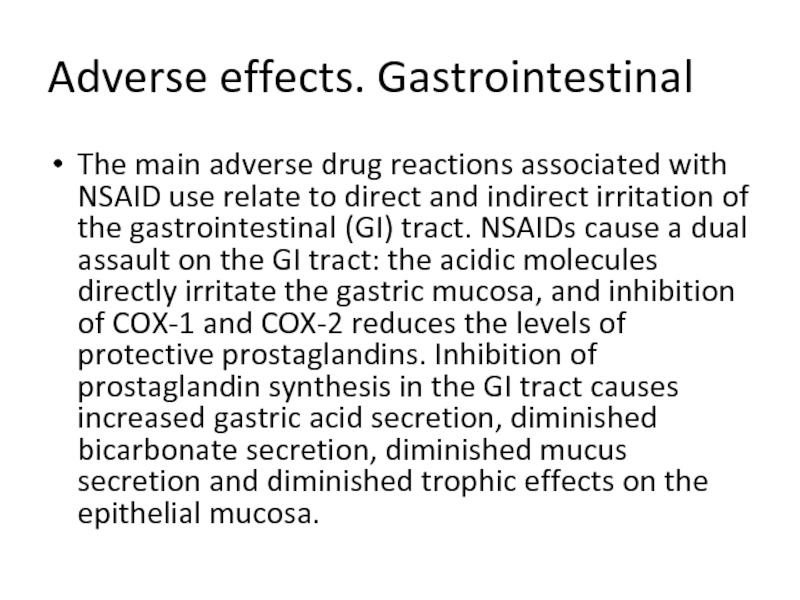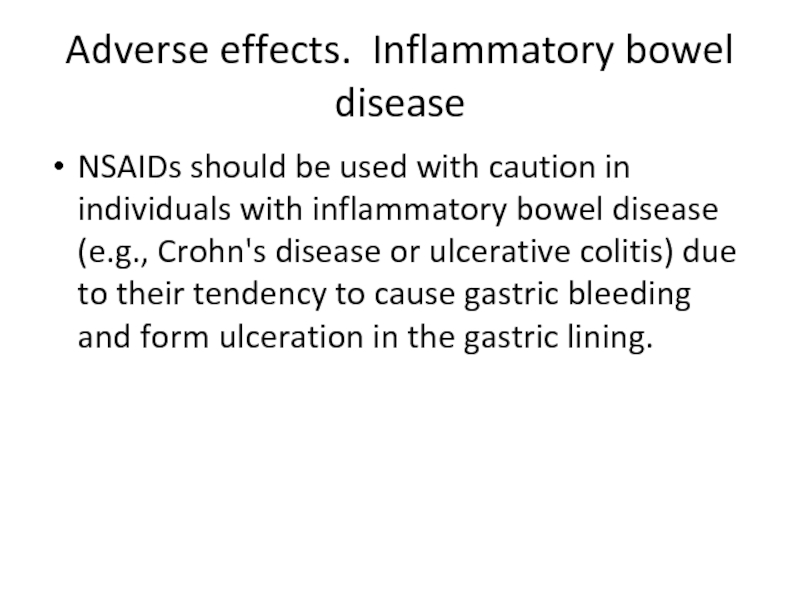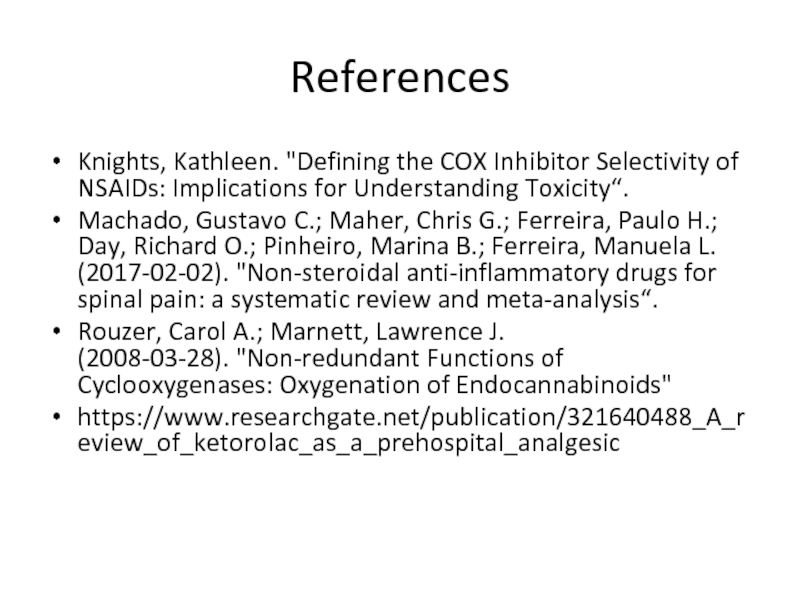- Главная
- Разное
- Дизайн
- Бизнес и предпринимательство
- Аналитика
- Образование
- Развлечения
- Красота и здоровье
- Финансы
- Государство
- Путешествия
- Спорт
- Недвижимость
- Армия
- Графика
- Культурология
- Еда и кулинария
- Лингвистика
- Английский язык
- Астрономия
- Алгебра
- Биология
- География
- Детские презентации
- Информатика
- История
- Литература
- Маркетинг
- Математика
- Медицина
- Менеджмент
- Музыка
- МХК
- Немецкий язык
- ОБЖ
- Обществознание
- Окружающий мир
- Педагогика
- Русский язык
- Технология
- Физика
- Философия
- Химия
- Шаблоны, картинки для презентаций
- Экология
- Экономика
- Юриспруденция
Nonsteroidalanti-inflammatory_drugs презентация
Содержание
- 1. Nonsteroidalanti-inflammatory_drugs
- 2. Inflammation Inflammation is part of the
- 3. What is NSAIDs? Nonsteroidal anti-inflammatory drugs (NSAIDs)
- 4. Classification
- 5. Mechanism of action Most NSAIDs act as
- 7. Medical uses NSAIDs are usually used for
- 8. Adverse effects The widespread use of NSAIDs
- 9. Adverse effects. Combinational risk If a COX-2
- 10. Adverse effects. Cardiovascular NSAIDs, aside from aspirin,
- 11. Adverse effects. Gastrointestinal The main adverse drug
- 12. Adverse effects. Inflammatory bowel disease NSAIDs should
- 13. References Knights, Kathleen. "Defining the COX Inhibitor Selectivity
Слайд 1Nonsteroidalanti-inflammatory drugs.
Non-selectiveCOXinhibitors.Selective
COXinhibitors.
Buyanova T. A.
Trushnikova V.E.
The ministory of health of yhe Russian
Слайд 2
Inflammation
Inflammation is part of the complex biological response of body tissues
The function of inflammation is to eliminate the initial cause of cell injury, clear out necrotic cells and tissues damaged from the original insult and the inflammatory process, and initiate tissue repair
Слайд 3What is NSAIDs?
Nonsteroidal anti-inflammatory drugs (NSAIDs) are a drug class that
Side effects depend on the specific drug, but largely include an increased risk of gastrointestinal ulcers and bleeds, heart attack and kidney disease
Слайд 5Mechanism of action
Most NSAIDs act as nonselective inhibitors of the enzyme cyclooxygenase (COX), inhibiting
Слайд 7Medical uses
NSAIDs are usually used for the treatment of acute or
NSAIDs are generally used for the symptomatic relief of the following conditions:
Osteoarthritis
Low back pain
Headache
Migraine
Слайд 8Adverse effects
The widespread use of NSAIDs has meant that the adverse
NSAIDs, like all drugs, may interact with other medications. For example, concurrent use of NSAIDs and quinolones may increase the risk of quinolones' adverse central nervous system effects, including seizure.
Слайд 9Adverse effects. Combinational risk
If a COX-2 inhibitor is taken, a traditional
In addition, people on daily aspirin therapy (e.g., for reducing cardiovascular risk) must be careful if they also use other NSAIDs, as these may inhibit the cardioprotective effects of aspirin.
Слайд 10Adverse effects. Cardiovascular
NSAIDs, aside from aspirin, increase the risk of myocardial
NSAIDs aside from (low-dose) aspirin are associated with a doubled risk of heart failure in people without a history of cardiac disease.
Слайд 11Adverse effects. Gastrointestinal
The main adverse drug reactions associated with NSAID use
Слайд 12Adverse effects. Inflammatory bowel disease
NSAIDs should be used with caution in
Слайд 13References
Knights, Kathleen. "Defining the COX Inhibitor Selectivity of NSAIDs: Implications for Understanding
Machado, Gustavo C.; Maher, Chris G.; Ferreira, Paulo H.; Day, Richard O.; Pinheiro, Marina B.; Ferreira, Manuela L. (2017-02-02). "Non-steroidal anti-inflammatory drugs for spinal pain: a systematic review and meta-analysis“.
Rouzer, Carol A.; Marnett, Lawrence J. (2008-03-28). "Non-redundant Functions of Cyclooxygenases: Oxygenation of Endocannabinoids"
https://www.researchgate.net/publication/321640488_A_review_of_ketorolac_as_a_prehospital_analgesic
